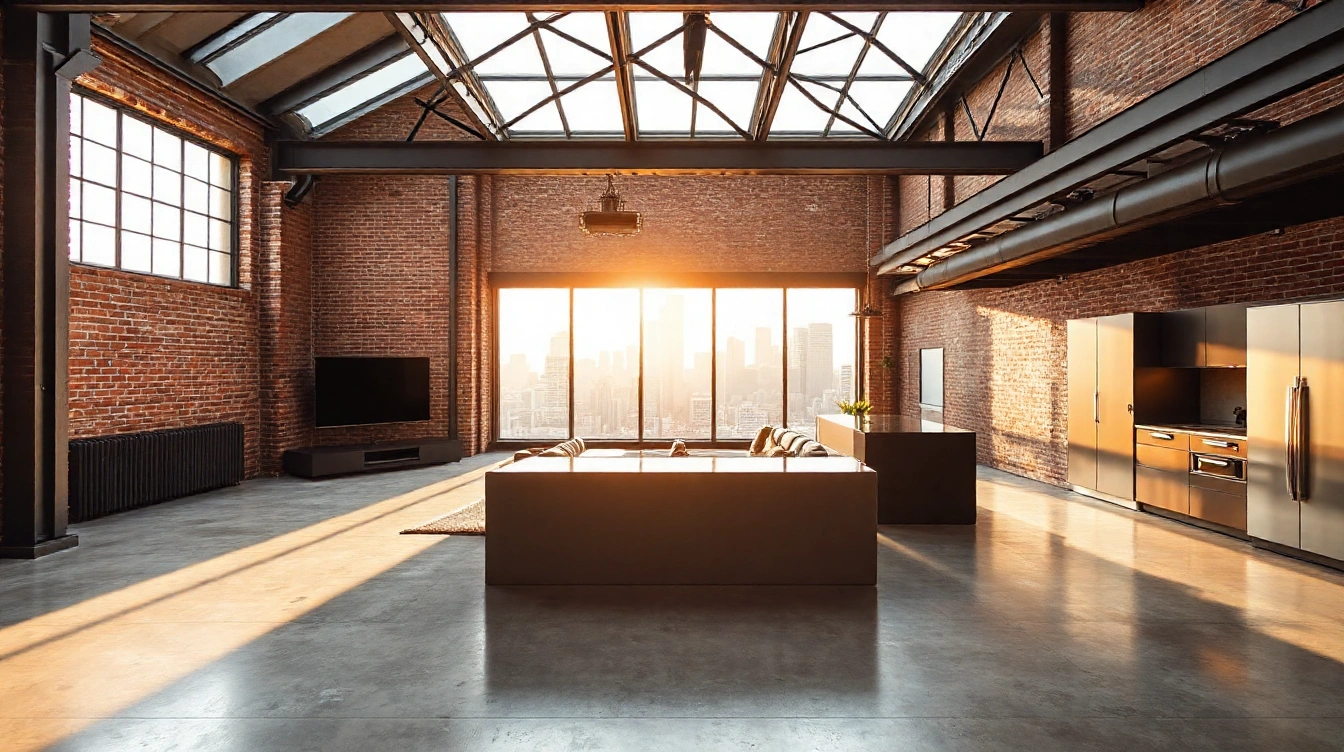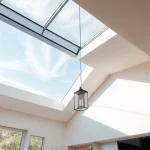Planning a loft conversion raises an important question: Do you need an architect to ensure success? This depends largely on your project’s complexity, budget, and goals. Understanding an architect’s role—beyond just design—can clarify whether their expertise adds real value to your renovation, helping you balance creativity, compliance, and cost. Exploring alternatives and legal requirements also matters before deciding whom to involve in your transformation.
Immediate considerations for deciding on an architect
When contemplating a loft conversion necessity, the first step is to evaluate the project’s complexity and your specific goals. Deciding whether to hire an architect hinges largely on these factors. For straightforward loft conversions with minor structural changes, some homeowners may opt to proceed without professional architectural input. However, for more complex transformations involving structural alterations or intricate design requirements, hiring an architect becomes essential.
Additional reading : Top-rated asbestos removal services in london you can rely on
Key factors to assess include the scope of work, compliance with building regulations, and integration with the existing structure. An architect brings expertise in navigating planning permissions and ensuring the loft conversion meets all safety and legal standards. This is crucial in the essential loft conversion steps, as missing approvals early on can result in costly delays or revisions.
Budget also plays a significant role. While involving an architect entails an upfront cost, their input can lead to smarter design choices and better space utilization, enhancing overall value. Homeowners with clear goals for maximizing light, functionality, or resale appeal often find that investing in professional advice is worthwhile.
In parallel : Essential Factors to Consider When Selecting a Wood Burner Stove for Your Norfolk Cottage
In summary, the three main criteria guiding the reasons for an architect in a loft conversion are:
- Project complexity and structural needs
- Compliance with planning and building regulations
- Clarity and ambition of renovation goals
For those unsure about whether an architect is necessary, consulting an Architect for loft conversion can provide tailored guidance, ensuring the process runs smoothly and meets expectations.
The role of an architect in loft conversions
An architect’s responsibilities in a loft conversion extend far beyond simple design. They play a pivotal role in shaping the entire project from conception to completion. Primarily, architects ensure the conversion maximizes available space while enhancing both functionality and aesthetic appeal. Their expertise allows them to design layouts that optimize natural light, ventilation, and structural integrity, resulting in a more comfortable and usable living area.
During the planning process, architects are instrumental in navigating complex regulations. They prepare detailed drawings and documentation required for planning applications, ensuring compliance with local building codes and restrictions. This reduces the risk of delays or rejections and helps streamline approvals. Additionally, architectural services often include liaising with structural engineers and local authorities, managing approvals, and overseeing construction to maintain design integrity.
Architects also provide creative solutions that integrate the loft seamlessly into the existing home. This often involves balancing the desire for open-plan spaces with practical considerations such as insulation, access, and load-bearing structures. Through their architectural services, homeowners benefit from a personalized, practical loft conversion that not only meets regulatory demands but also enhances property value and living quality.
If you are exploring a loft conversion, consulting an Architect for loft conversion can be invaluable in ensuring your vision is realized efficiently and beautifully.
Pros and cons of hiring an architect
Evaluating the value of professional design
Hiring an architect brings several benefits, foremost among them being professional creativity and compliance expertise. Architects provide innovative design solutions tailored to your specific needs, ensuring that every detail maximizes space, functionality, and style. Their knowledge of building regulations guarantees your project meets legal standards, reducing the risk of costly amendments later. This expertise often translates into peace of mind, as you can trust that the value of professional design reflects both aesthetics and safety.
However, there are notable architect drawbacks that you should consider before proceeding. The cost of an architect can be significant, especially for smaller projects, and may not always fit within a tight budget. Additionally, working with an architect can extend your timeline due to design revisions and approval processes. Effective communication is essential; misunderstandings may result in delays or designs that don’t fully align with your vision.
When deciding, weigh the added value against these expenses carefully. While an architect’s input can elevate your project and prevent future issues, make sure their fees and project schedule match your expectations. If you seek a balanced perspective or are uncertain if professional design is necessary, consulting an Architect for loft conversion can provide clarity on whether their expertise justifies the investment.
Alternatives to hiring an architect
When considering designing without an architect for your loft conversion, there are several viable alternatives for loft design that homeowners can explore. One common option is hiring specialist contractors who have extensive experience in loft conversions. These professionals often provide design input alongside construction expertise, streamlining the process.
Another popular route is choosing design and build firms. These companies handle both the design and construction phases, simplifying communication and project management. This option is especially suitable if you prefer a single point of contact and want your project timeline to proceed smoothly.
In some cases, homeowners opt to self-design their loft spaces, particularly if they have a clear vision and are comfortable navigating planning regulations. However, this approach requires thorough research and familiarity with structural requirements.
While these alternatives can reduce upfront costs and may be quicker, it is crucial to understand their limitations. Skipping an architect might lead to design compromises or issues with obtaining planning permission. Structural engineers, for instance, focus more on safety and compliance rather than aesthetics or optimizing space, which an architect might address more creatively.
Before deciding to proceed without an architect, it’s wise to assess the complexity of your loft conversion and whether the chosen alternative offers the expertise needed. For more detailed guidance on making this choice, consulting an Architect for loft conversion can provide critical insights and help avoid costly mistakes.
Legal, structural, and safety requirements
Understanding your responsibilities for a safe, compliant loft conversion
When considering loft conversion regulations, the foremost step is to determine if your project requires planning permission. Not all loft conversions need formal approval, but many must comply with local building codes to ensure safety and legality. Always verify this with your local council to avoid costly penalties or having to undo work later.
Structural integrity is paramount. Loft conversion regulations emphasize the necessity to maintain the house’s overall stability. This means the existing framework must support the new load, and any modifications like adding joists or dormers must meet strict compliance standards. Inspecting and reinforcing the roof structure falls under these regulations, often necessitating consultation with structural engineers or an architect. The involvement of such professionals ensures both safety and adherence to local codes.
Meeting legal obligations also includes fire safety provisions, such as ensuring adequate escape routes and proper insulation materials. To navigate these complexities confidently, engaging a specialist can streamline the process and guarantee that all elements—from foundation to finishing—observe loft conversion regulations diligently.
For those unsure whether an architect is necessary for your loft conversion success, consulting an Architect for loft conversion will offer clarity on how best to meet structural safety and building code requirements. This step significantly reduces risks and helps secure all required permissions swiftly.
Real-world examples and expert opinions
Real-world loft conversion case studies reveal the significant impact an architect can have on a project’s success. Homeowners who engaged an architect often experienced fewer structural issues and better use of space, compared to those who proceeded without professional design input. For instance, one case study showed that employing an architect reduced unforeseen costs by 20%, thanks to thoughtful planning and adherence to building regulations from the outset.
Architect testimonials frequently highlight that early architectural involvement streamlines approvals and enhances design quality. Architects shared that projects without their expertise tend to face delays caused by ignoring planning guidelines or inefficient layout choices. Their expert insights emphasize the importance of detailed surveys and 3D visualization techniques to foresee construction challenges.
Contractors also provide valuable perspectives. They report smoother workflows and fewer on-site complications when collaborating with architects, indicating that professional oversight reduces costly corrections. Homeowner experiences reinforce this: many cite frustration with execution mistakes and space limitations when skipping architectural advice.
The consensus from these sources is clear. An architect not only ensures structural safety and legal compliance but also maximizes the functional and aesthetic value of a loft conversion. For those considering a loft conversion, consulting an Architect for loft conversion is a wise investment for peace of mind and quality results.
Guidance for making your decision
When evaluating the need for an architect in your loft conversion, start by reviewing a clear decision-making checklist. This approach ensures you don’t overlook critical factors influencing your project’s success. Consider the complexity of your loft conversion, including structural changes, planning permission, and design preferences. If your project involves intricate structural alterations or requires innovative use of space, an architect’s expertise becomes invaluable.
Key questions to ask before hiring or skipping an architect include:
- Will my loft conversion require planning permission or building regulations approval?
- Do I need customised design input to maximise space and functionality?
- Can I manage the project’s technical and compliance requirements independently?
Answering these clarifies whether personalised recommendations are essential for your project’s unique challenges or if a more straightforward path suffices.
Matching project needs to professional services means understanding which areas benefit most from an architect’s skills. Architects offer precise planning, detailed drawings, and can act as your architect for loft conversion, ensuring regulatory compliance and smooth project management. They also help navigate building regulations, which can be complex and time-consuming. However, if your loft conversion is standard and uncomplicated, you might opt for experienced builders with proven track records instead.
Adopting this strategic decision-making checklist enhances your ability to balance cost, quality, and outcome, guiding you confidently to the best choice for a successful loft conversion.











